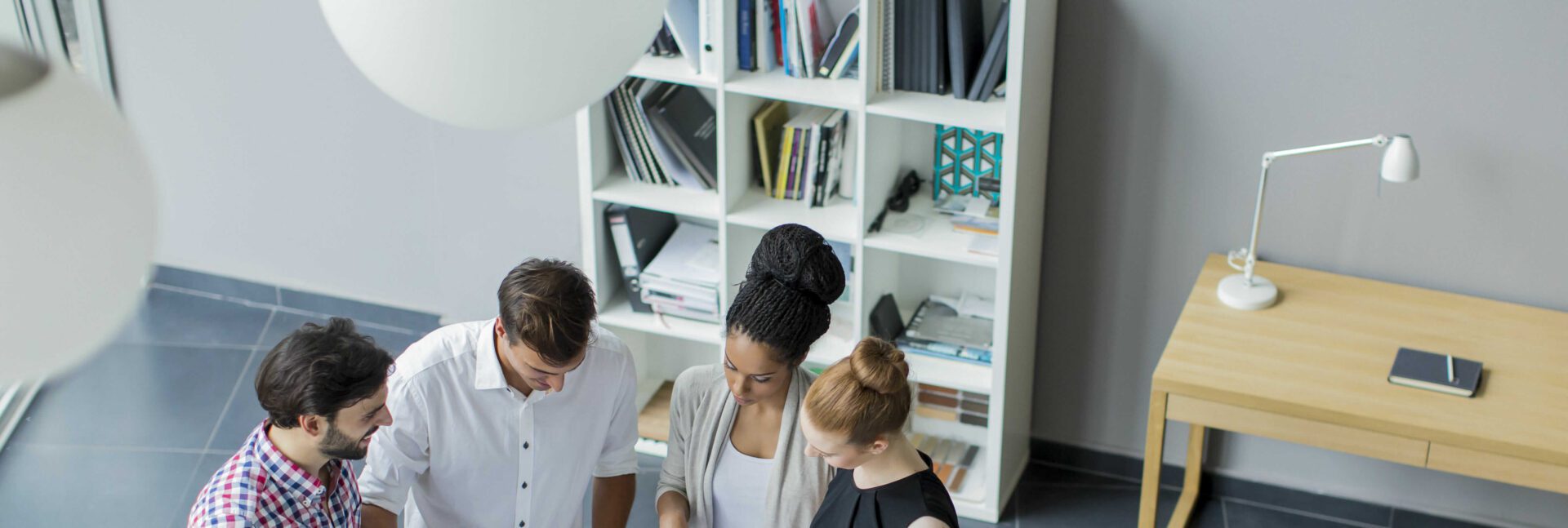
Are you planning or developing a shared work environment? An activity-based workplace? Congratulations! Thousands of organizations globally are right there with you.
You’ve run the numbers, you’ve secured the budget, and the project is a go…so why do you and your team feel the dull ache of change in the pit of your stomachs? What makes workplace change so difficult?
It’s personal.
The workspace has been an employee’s identity for two generations
In the second half of the last century, Bell Telephone Companies across the nation adopted a hierarchy of office real estate that corresponded with an individual’s position in the organization. The square footage of one’s office, the size of their desk, type of furniture and its amenities were specified for individuals who had reached particular management levels within the organization.
And, whether you were in a central office in Chicago, a business office in Los Angeles, or an engineering office in New York, everyone knew the level of management of the occupier with a quick glance at their office. Imagine the pride of a parent showing off their office on ‘bring your kids to work day.’
–When you takesomeone’s identity away, what do they have left?–
For two generations, the office one occupied with their name on it had become a source of personal pride, value, respect, accomplishment and aspiration. Since the 1950s, visual positional cues to some degree have permeated every enterprise large and small. Organizationswith the history of these traditional visual cues will behardest to change because it’s personal.
Fast forward to today
If you have responsibility for implementing a shared office space, many others feel your pain. With all the technology-induced changes in the workplace, you have disruption coming at you left and right. In orderto ensure the changed office quickly becomes the new normal, the positive benefits of the new workplace must overpower the losses.
Since workplace change is so personal,do you have a plan to handle emotionally charged objections? Consider setting a new tone by redirecting the loss of the “ever-important desk identity” with these ideas:
- Post a blog that neutralizes the top 10 workplace objections
- Make a good case for the change,whyit’snecessary and what’s in it for them
- Reinforce the benefits of the new workplace andstir up some excitement
- Build positive momentum by circulating thought-leader support
- Showtestimonialsfeaturing key executives giving up their offices
- Publicizeexamples of how some team membersare accepting the change
There’s never been a better time to take advantage of emerging technology to transform your workplace. Organizations are making the tough decision to create a shared workplace to stay competitive,or maybe to even survive their ever-changing marketplace. With the right plan and strategy, in acouple ofyears you will look back and conclude that you’ve exceeded your real estate utilization goals, people actually like their new workplace, and all thatshort-term pain was worth the long-term gain!
___________________________________________
See the Evolving Workplace e-Learning Series: Technology-enabled workplace change can only be successful if the people change too. The e-work.com Evolving Workplace e-Learning Series modules accelerate workplace change through a deliberate mindshift in individuals, teams and the enterprise to work together in new ways.
Register to see the Making the Case for Workplace Change course outline.